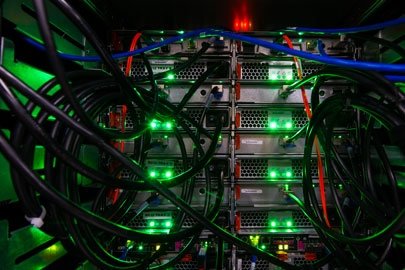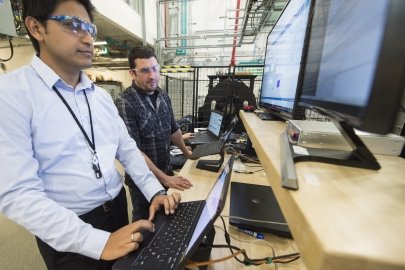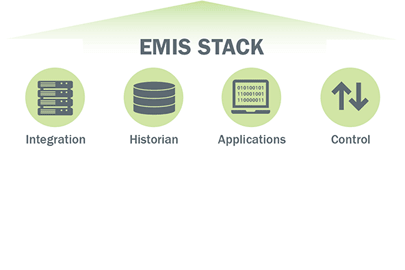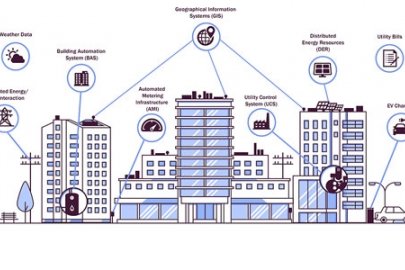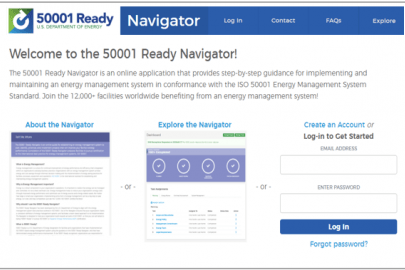Energy management information systems (EMIS) are a broad and rapidly evolving family of software tools that monitor, analyze, and control building energy use and system performance. All EMIS deployments can be broken down into three functional elements—capabilities, scope, and stack. These form a system of devices, data services, and software applications that aggregate facility data and help optimize energy use at the building, campus, or agency level. A fourth element, operations, represents the people, organizational processes, and actions recommended to successfully use an EMIS.
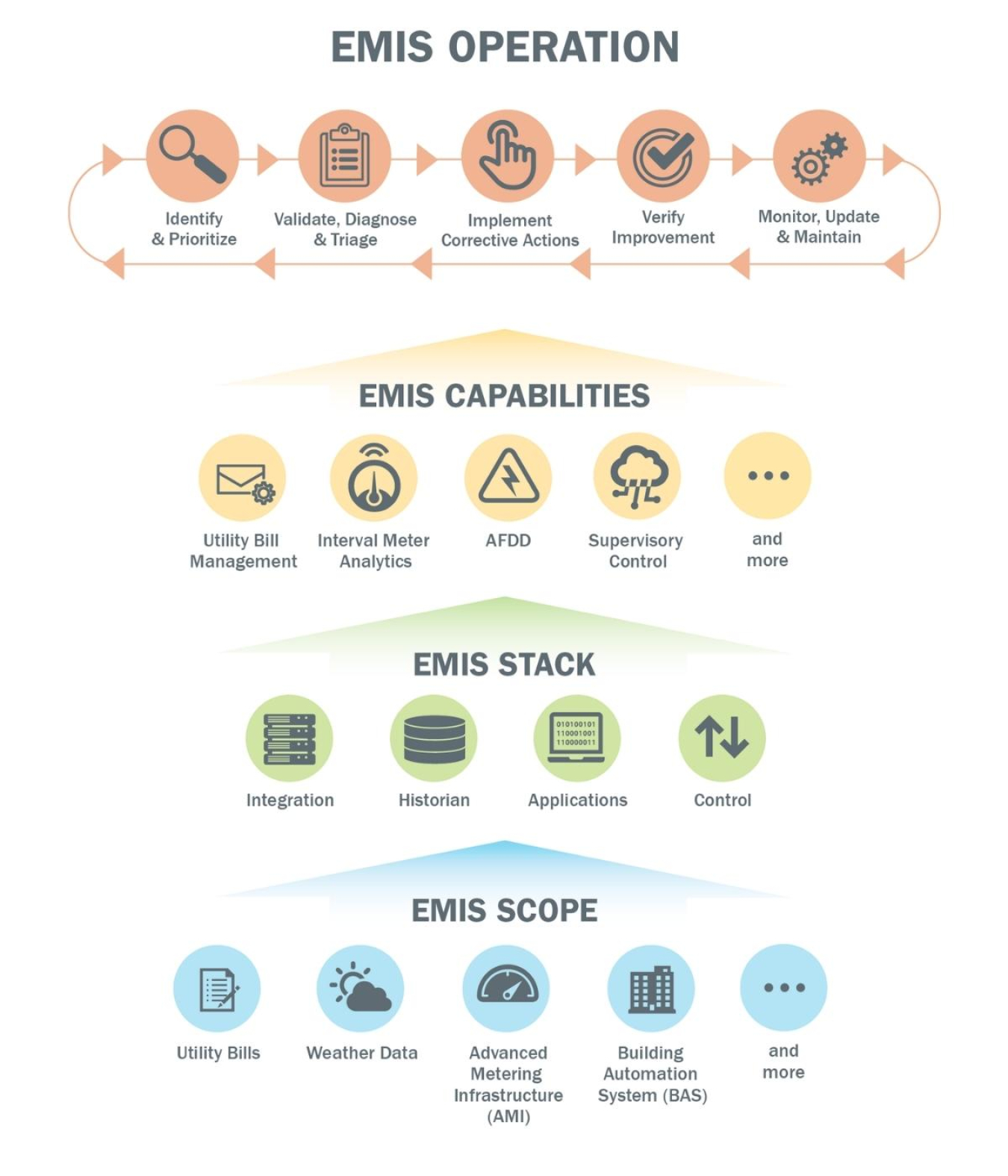
EMIS Capabilities
EMIS capabilities—outputs that provide value to users—include the following:
- Centralize, normalize, and visualize data: Automatically bring data streams together from different sources into a common database to allow for visualization of key performance indicators
- Utility bill management: Track, understand, and process data from utility bills
- Interval meter analytics: Analyze meter data at intervals of one hour or less
- Measurement and verification: Quantify and verify the energy savings performance of individual energy conservation measures or efficiency projects
- Automated fault detection and diagnostics: Automatically detect equipment-level or system-level faults and diagnose their causes
- Supervisory control: Perform automated changes to underlying building systems for optimization
- Operations and maintenance optimization: Integrate the above capabilities with operations and maintenance processes to increase efficiency.
Learn more about EMIS
Download FEMP's Energy Management Information Systems Technical Resources Report.
EMIS Scope
The EMIS scope includes all integrated building systems and data sources. These commonly include utility bills, weather data, facility-related data, advanced metering infrastructure, building automation systems, utility control systems, distributed energy resources, internet-of-things devices, electric vehicle charging stations, and geographic information systems.
EMIS Stack
The EMIS stack includes all the devices, data services, and applications that meet the needs of the user. The stack has many different components depending on the EMIS implementation:
- Integration components are responsible for managing communication between the scope and the historian component. It could include hardware and software, including drivers for protocol translation.
- The historian component stores time series data and associated metadata in one or more databases, providing those data on request to applications.
- Applications consist of all high-level analysis and visualization tools that rely on collected data.
- Supervisory control supports applications that affect the operation of building devices in an automated or semiautomated manner.
Operations
EMIS operations include the actions enabled or processes improved by EMIS capabilities, and the facilities staff, operators, energy managers, and building occupants who use EMIS to optimize the building, campus, or agency. EMIS are human-in-the-loop tools and will not generate savings unless the energy conservation measures identified by EMIS are acted upon and implemented by people.


